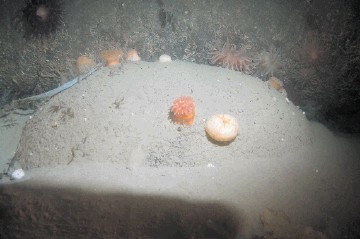
Oil giant Shell is preparing to remove a World War II mine threatening one of the UK’s most important gas pipelines.
A subsea bomb squad is planning an attempt to reach the device, which lies in the North Sea 62 miles off St Fergus, in August.
The mine has been monitored by the firm with independent professional input since it was first found in 1993 and is said to be stable.
But it lies beneath a pipeline responsible for 5% of the UK’s daily gas supply.
A spokeswoman for the company said: “Shell became aware of this unexploded ordnance in 1993. Since that time the company has regularly inspected the site and sought professional advice on how best to proceed.
“The consistent advice the company received was to leave the mine in position and continue to monitor it periodically.
“The development of new technology means that Shell believes it may now be possible to remove the mine. Shell is considering technical options for the safe removal and disposal of the unexploded ordnance.”
The British-made mine was not visible when the pipeline – known as FLAGS (Far North Liquids and Associated Gas System) – was completed in 1978 and commissioned in May 1982.
The pipeline is used to transport liquids and associated gas from a number of platforms, including the four Brent platforms.
The device has been inspected by the Royal Navy, which advised leaving it in place after the initial discovery.
The Health and Safety Executive, the Department of Energy and Climate Change, and Grampian Police have also been involved.
However, the development of new technology means that an attempt to remove the mine can now be considered.
Shell has been working with Portsmouth-based unexploded ordnance disposal firm Ramora UK on a solution.
The new technology – known as a Remote Explosive Ordnance Disposal System, or REODS – has for the first time created an opportunity to lift and dispose of the bomb safely.
It is understood that Ramora plans to attach a lifting mechanism and a bag to the mine, which it will then inflate to bring the mine to the surface.
The bomb will then be towed to a safe area, lowered to the seabed and detonated.
Shell recently deployed a guard vessel to keep a continuous watch on the site.